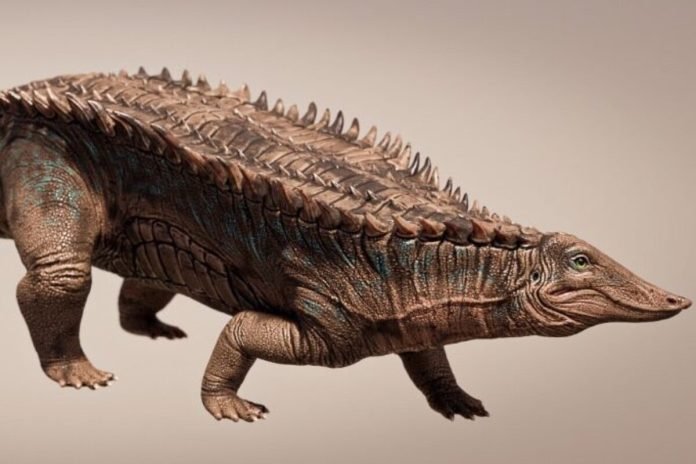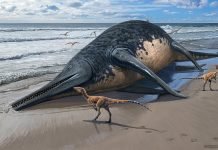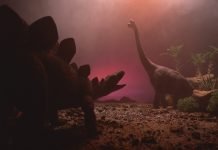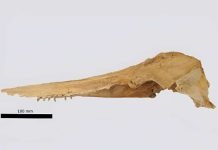
Long before dinosaurs became the stars of prehistory, the aetosaurs, which were like the ancestors of today’s crocodiles but armored like tanks, roamed our planet.
These ancient creatures, known for their heavy armor, thrived until they disappeared around 200 million years ago.
Their remains have been found almost everywhere in the world, except Antarctica and Australia.
At The University of Texas at Austin, a team led by a curious doctoral student named William Reyes has made an exciting discovery.
They found an aetosaur’s armor, which is more complete than any other found before, covering nearly 70% of its body.
This discovery has given scientists a rare glimpse into the world of these ancient armored animals.
This particular aetosaur, named Garzapelta muelleri, was discovered in Garza County, Texas. The “Garza” in its name pays homage to where it was found, and “Pelta” means shield in Latin, hinting at the creature’s heavily armored body.
The species was named after Bill Mueller, the paleontologist who first discovered it.
Garzapelta lived around 215 million years ago and looked somewhat like a modern American crocodile, but with way more armor.
Its body was covered in bony plates called osteoderms, which fit together tightly, providing strong protection.
Besides its armored body, Garzapelta also had spikes on its sides for extra defense. Unlike today’s crocodiles, which are meat-eaters, scientists believe Garzapelta and its kin were more into a mixed diet of plants and meat.
What’s fascinating is that although Garzapelta shares some features with other aetosaurs, it’s quite different, showcasing nature’s talent for inventing similar solutions in different creatures, a concept known as convergent evolution.
Deciphering Garzapelta’s place in the aetosaur family tree was a bit tricky due to its unique combination of features.
Yet, this discovery highlights how complex and interesting the study of ancient life is, especially when it comes to understanding how different species evolve over time.
This discovery wouldn’t have been possible without the wealth of fossils stored at universities and museums, waiting for curious minds to uncover their secrets. It also opens up new questions about how these creatures lived and interacted with their environment, which William Reyes is eager to explore further.
Thanks to the support from the National Science Foundation and the Jackson School, this study shines a light on a remarkable creature that once ruled the land long before the age of dinosaurs, reminding us of the incredible diversity of life that has called Earth home.
Source: University of Texas at Austin.




